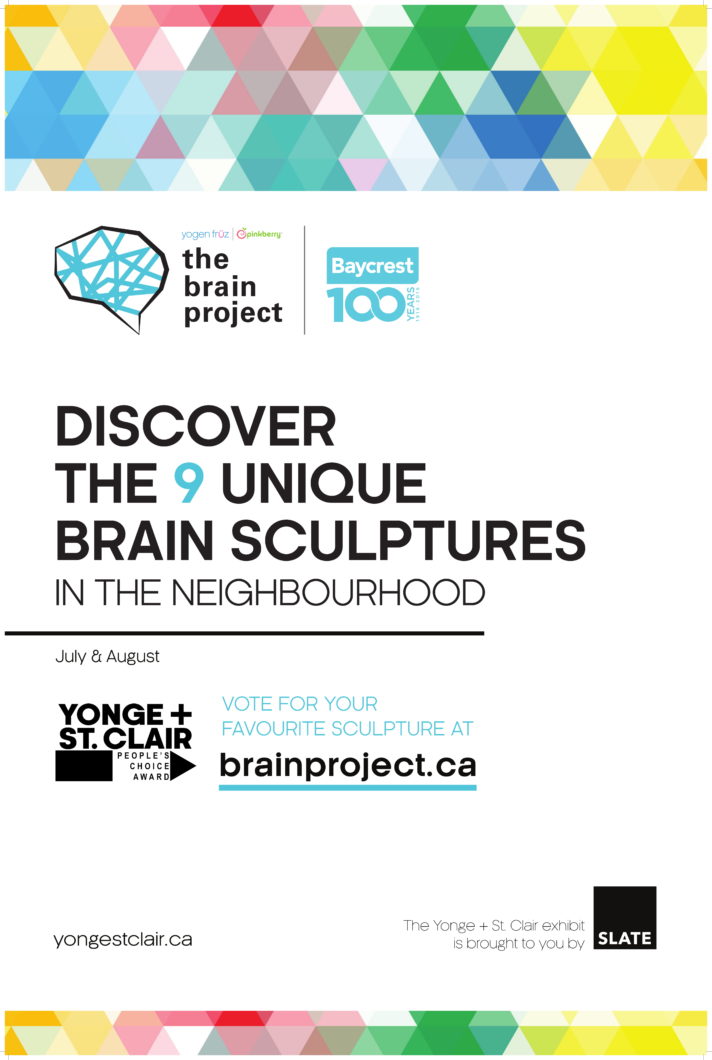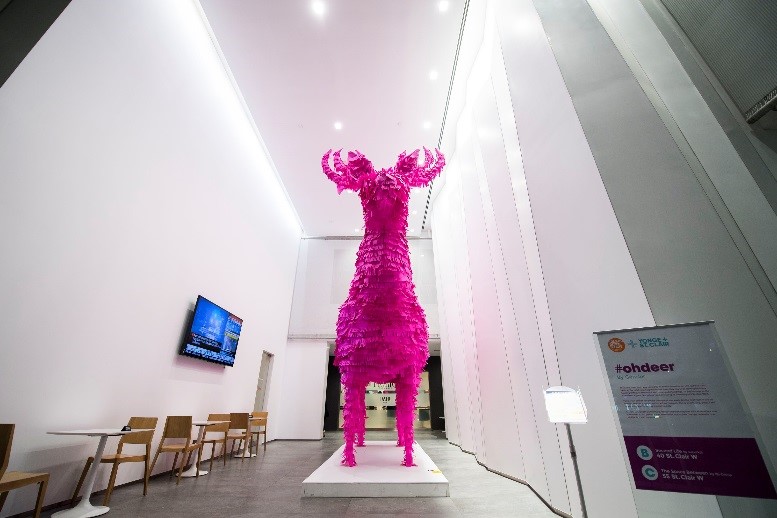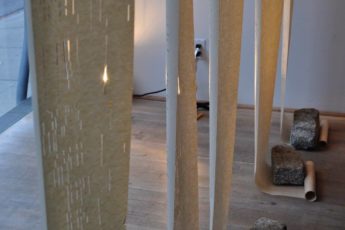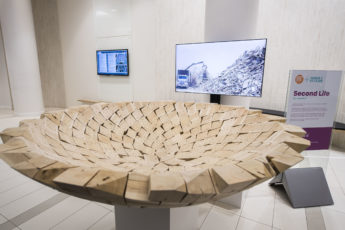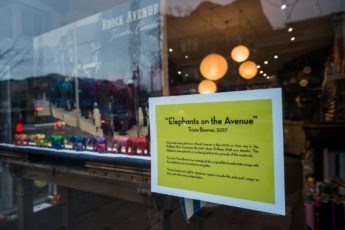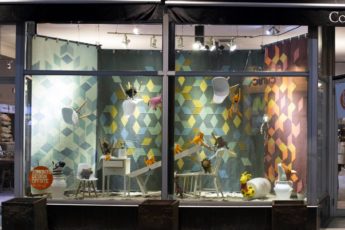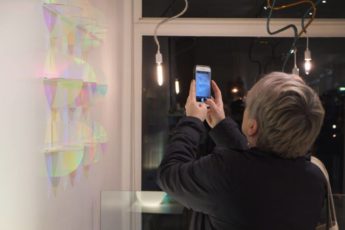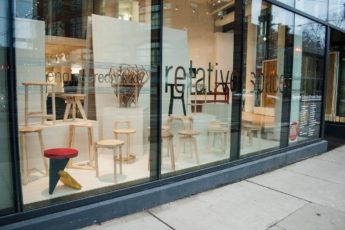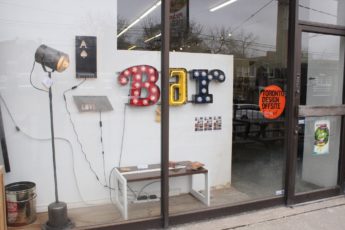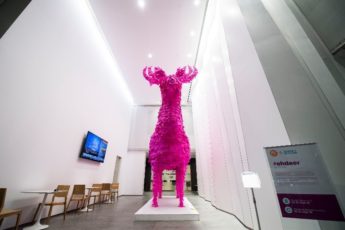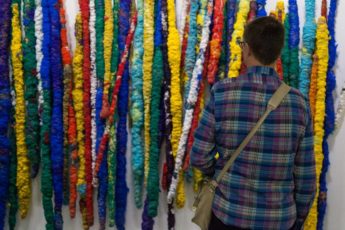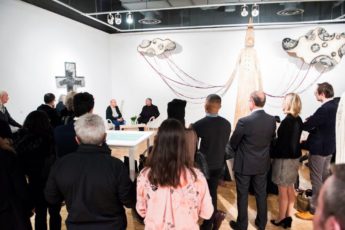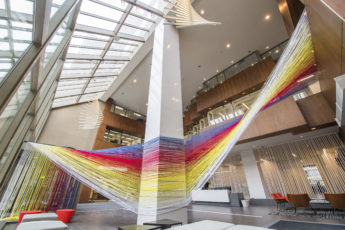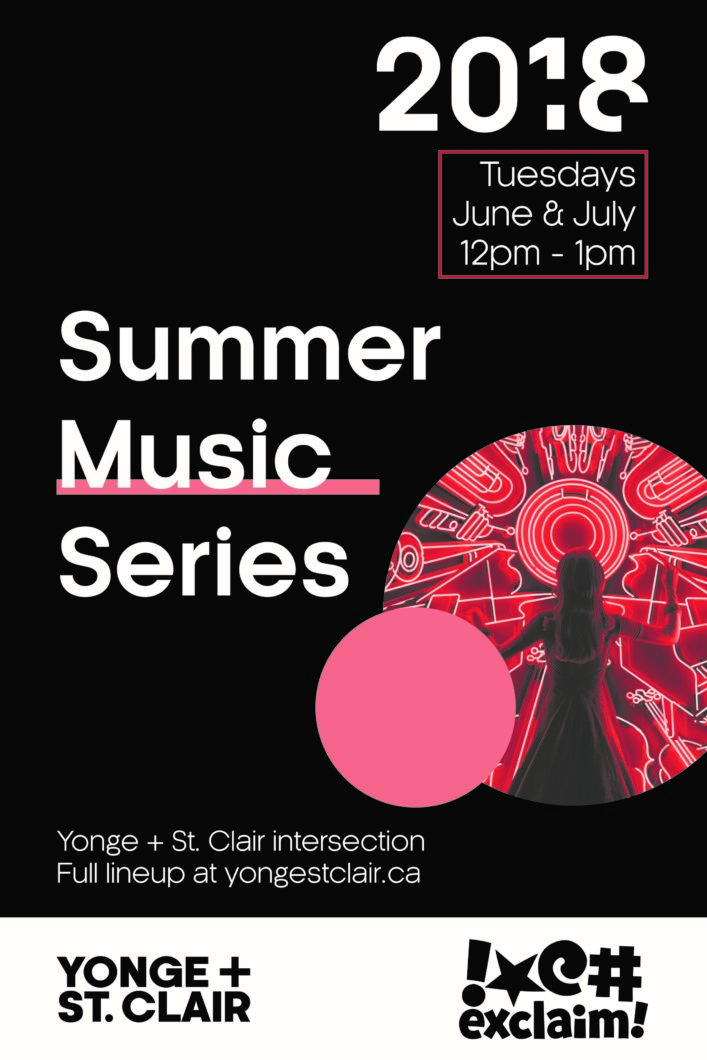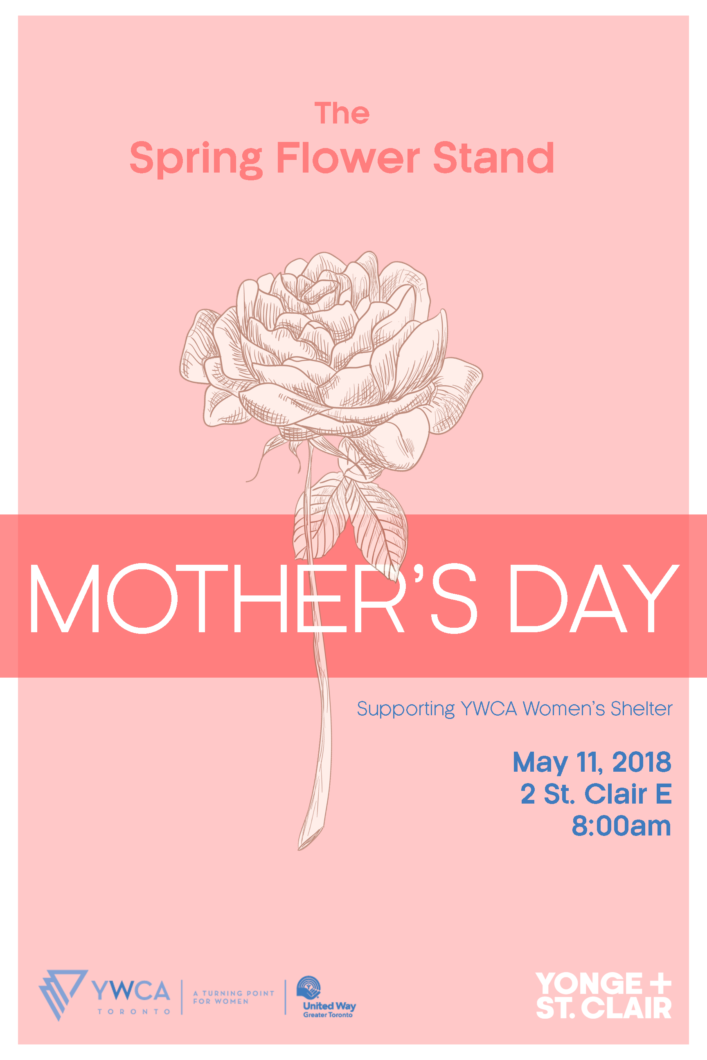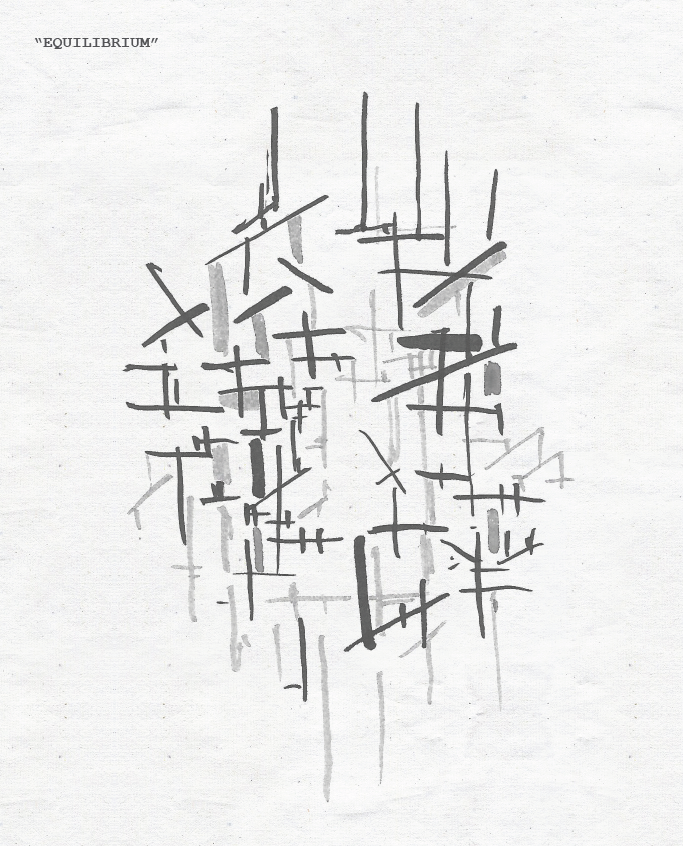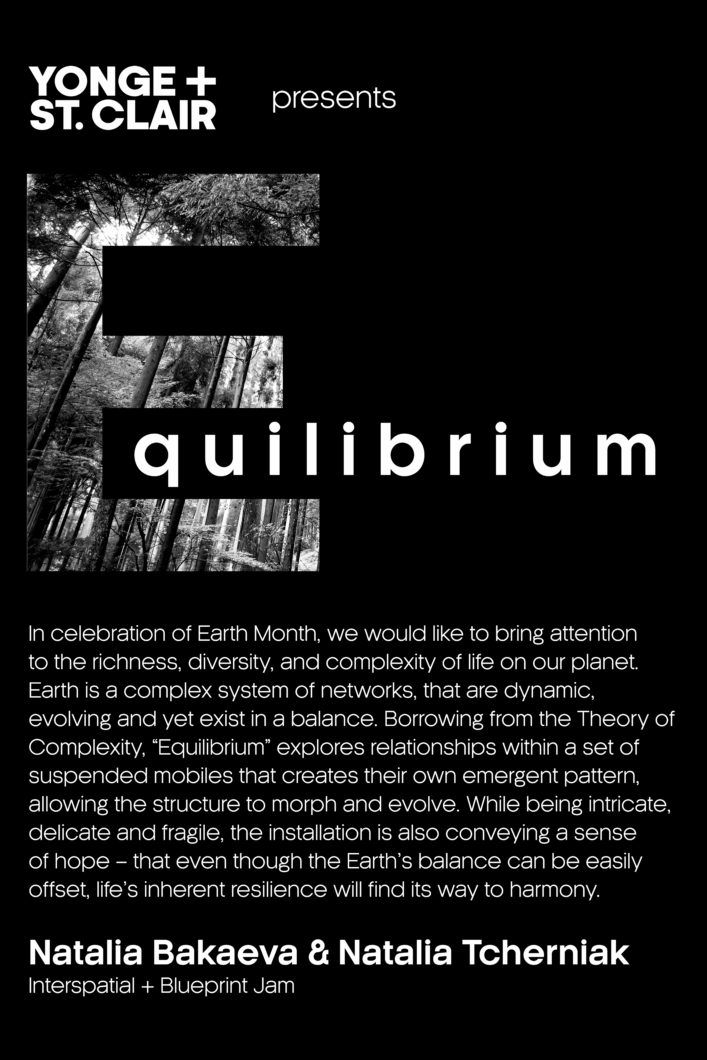Artist Eden Bender: Winner of the Yonge + St. Clair People’s Choice Award
This past summer Yonge + St. Clair was home to nine unique brain sculptures as part of the Toronto wide art initiative titled The Brain Project. As part of the initiative, Yonge + St. Clair was the title sponsor for the ‘People’s Choice Award’ which allowed the public to vote for their favourite brain sculpture which would have been designed by a talented group of artists, celebrities and thought-leaders from across North America.
This year’s People’s Choice winner was Eden Bender, whose sculpture titled ‘Connect/ Disconnect’ brought in over 3800 votes! We recently sat down with Eden during her exclusive private dinner provided by BUCA and The Delisle Space (as one of her two winning prizes) and asked her about the inspiration behind Connect/ Disconnect and why she chose to be a part of The Brain Project.
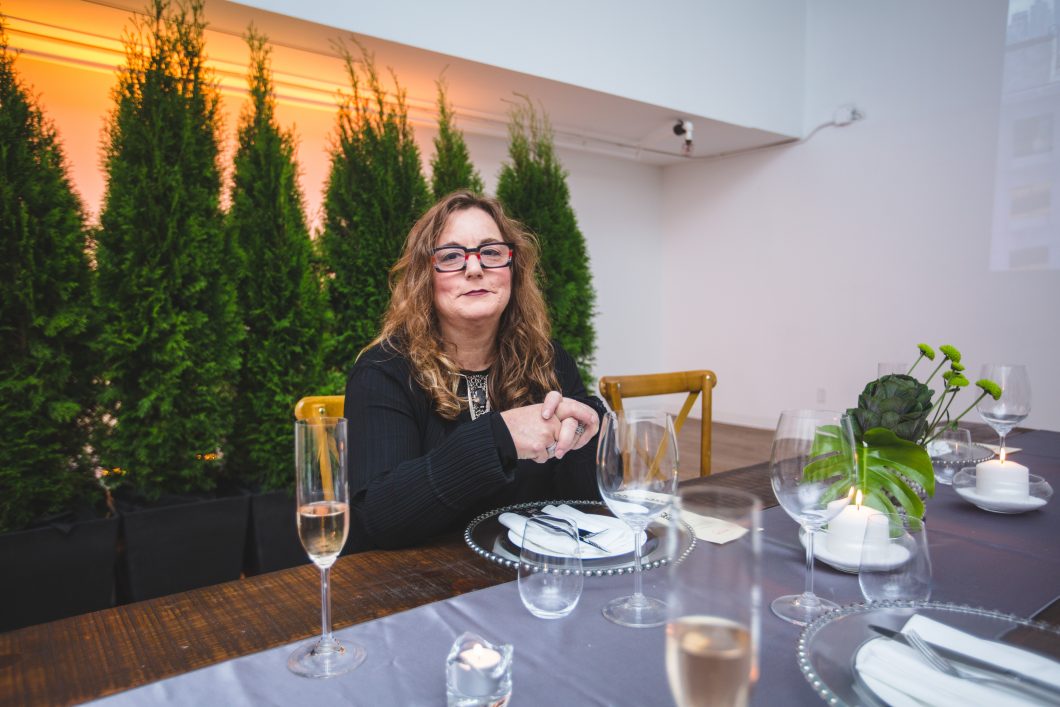
What was your creative thinking process behind Connect/Disconnect and how long did it take to create this sculpture?
I wanted to symbolize some of the challenges one faces with ASD (Autistic Spectrum Disorder). This sculpture required three weeks to produce with periods in between for drying. The first step was to create the contours of the brain and allow for it to dry. The pods were individually flocked and then applied to the surface of the brain. The flocked pods were then attached one by one to the brain.
Connect/Disconnect references Autism Spectrum Disorder and how the ASD brain experiences the world, sometimes in isolation. How have you captured this reality in your sculpture?
I selected the colour blue because of its emotional impact. There is an implied sadness but blue also represents the sky and the sea. These are symbolic of the need to feel grounded. The blue is also a cool colour that creates a distancing effect, symbolizing the isolation a person on the spectrum might experience. The flocking has a very soft surface that draws you in to touch. Sensory stimulation is very calming for those with ASD. The pods represent memories that in a normal brain connect as a point of reference and help to define appropriate behaviours but these pods remain disconnected.

Your work is heavily influenced by the adversity of the human condition. Was this theme always the motivation behind your sculptures and paintings, or has it
evolved over time?
I think I have always been intrigued by the ability to overcome hurdles in life. Everyone has their own trials but it is how we learn to overcome them that I try to depict in my work. I think part of being human is having flaws and the inner strength it requires to challenge them, our resiliency. My years of volunteer and community involvement have inspired most of my work and tell a story of inner strength. We have all at some point in our lives felt defeated, but success is defined differently for everyone. Part of my work is to demonstrate positive reinforcement to others including a kind of mantra for myself.
Have you always worked in this medium, or did you begin your career as an artist producing other types of work?
I have always loved discovering new materials that best relay my concepts. I studied Fine Arts majoring in painting, sculpture, and drawing. I have worked with bronze, wood, silver, oils, acrylics, resin, wax, steel, industrial waste, and more but I still enjoy researching and taking courses on new materials and techniques.
Is this your first year participating in The Brain Project? If so, what excited you the most about this city wide initiative?
It is my first year participating in The Brain Project. I have had many family members and friends who suffered from a brain disease and so it is close to my heart. The number of youth afflicted with mental illness and an ever growing population of elderly will leave us in a crisis for resources to provide proper care. We need to build more facilities like Baycrest to meet the demand. This venue has reached a large audience and has been a great way to engage the public with issues surrounding the brain. Hopefully it will inspire others to support this cause and realize the urgency.
What role do you think public art plays in sparking conversations or raising awareness about particular health or social issues?
I think The Brain Project is an innovative example of how we can start conversations. Public art is an excellent way to stop people in their tracks on the way to work voluntarily.
You exhibit some of your work at Muse Gallery – a neighbourhood gallery here at Yonge + St. Clair. Can you tell us about some other current projects that are underway and what we can expect from you in the near future?
I have been exhibiting in this neighbourhood for many years and there are so many art lovers and supporters here. It is one of the many attributes of this community. I am currently working on several projects, one of which is a sensory exhibition inspired by ASD. I am creating sensory sculptures and spaces that challenge traditional living spaces. I am a firm believer that as our needs change, we also need to adapt our homes, schools and work spaces to meet them. I am also in the process of making a participatory installation that explores the impact of acts of kindness.
Yonge + St. Clair is home to many different art forms, what compelled you to participate in this project and what initiatives are you excited to see in the area?
The world around us has a great effect on our mental stability. It is great to see that there is an effort to maintain historical low rise buildings and green spaces incorporated into the neighbourhood. I look forward to more site specific art initiatives.
Thanks Eden!
For more information on The Brain Project please visit www.brainproject.ca
